This pub takes its name from the building’s former use as Paisley’s main post office.
A photograph and text about The Last Post.
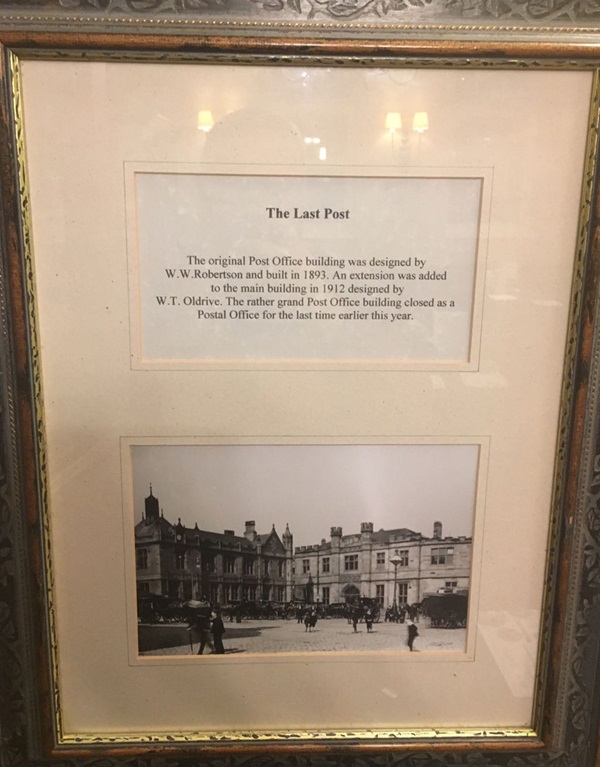
The text reads: The original post office building was designed by WW Robertson and built in 1893. An extension was added on the main building in 1912 designed by WT Oldrive. The rather grand post office building closed as a postal office for the last time earlier this year.
Prints and text about Charles Heath.
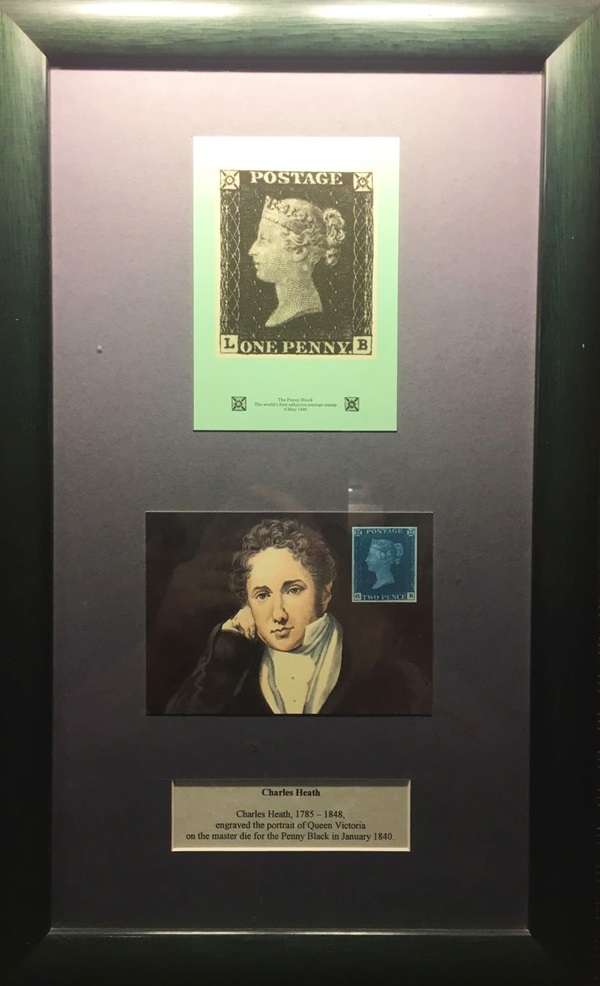
The text reads: Charles Heath, 1785 – 1848, engraved the portrait of Queen Victoria on the master die for the Penny Black in January 1840.
An original envelope from a letter in 1867.
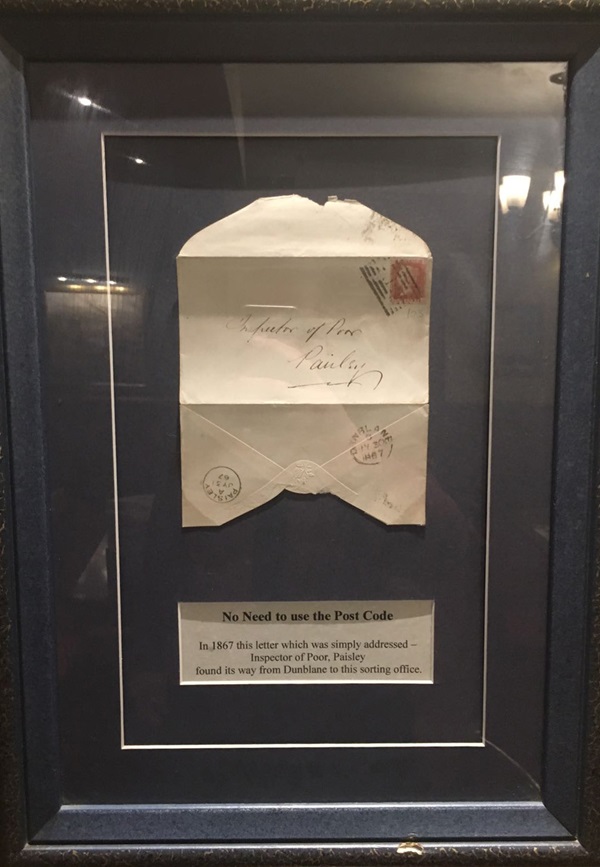
In 1867 this letter which was simple addressed to Inspector of Poor, Paisley, found its way from Dunblane to this sorting office.
Photographs of postal workers.
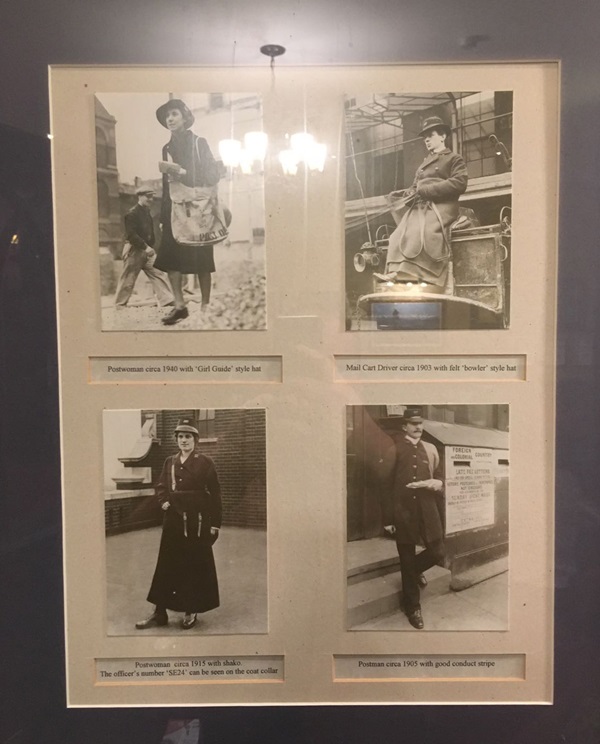
Top left: Postwoman c1940 with Girl Guide style hat
Top right: Mail cart driver c1903 with felt bowler style hat
Bottom right: Postman c1905 with good conduct stripe
Bottom left: Postwoman c1915 with shako. The officer’s number SE24 can be seen on the coat collar.
Text about Paisley pattern shawls, along with framed examples.
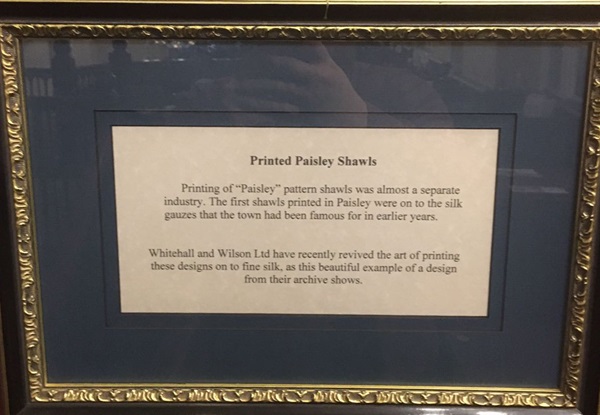
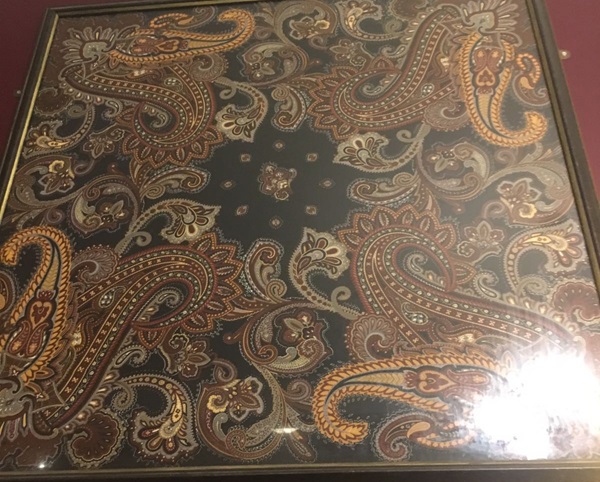
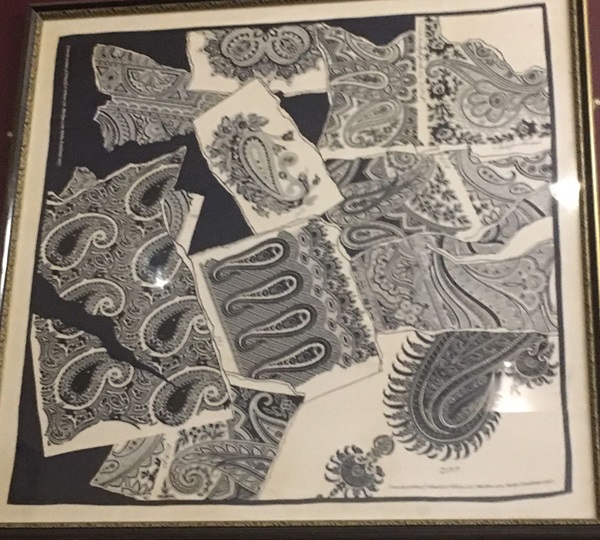
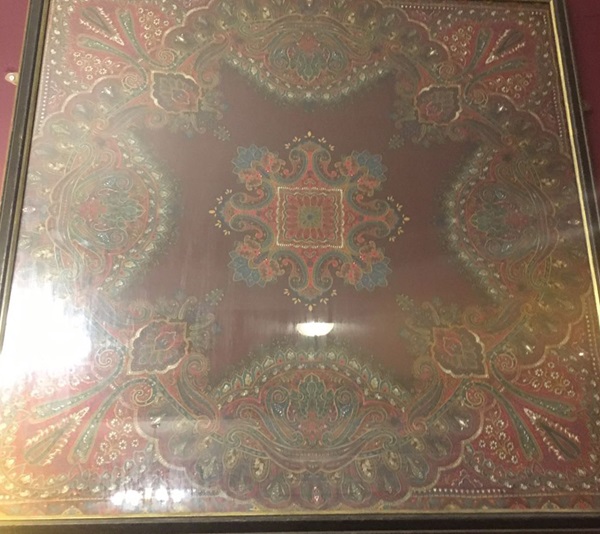
The text reads: Printing of Paisley pattern shawls was almost a separate industry. The first shawls printed in Paisley were on to the silk gauzes that the town had been famous for in earlier years.
Whitehall and Wilson Ltd have recently revived the art of printing these designs onto fine silk, as this beautiful example of a design from their archive shows.
Photographs and text about the Paisley industry.
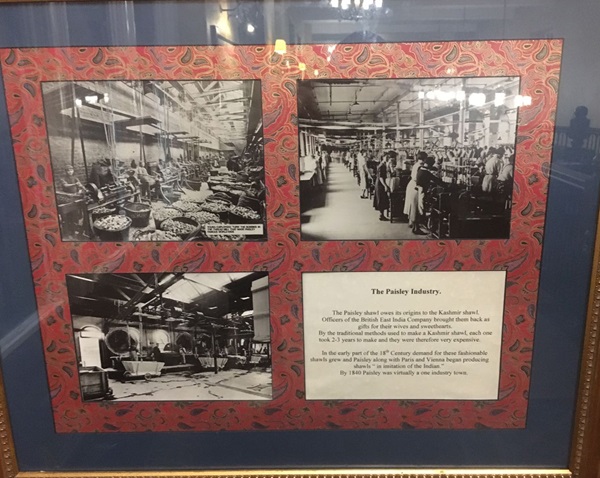
The text reads: The Paisley shawl owes its origins to the Kashmir shawl. Officers of the British East India Company brought them back as gifts for their wives and sweethearts.
By the traditional methods used to make a Kashmir shawl, each one took 2 to 3 years to make and they were therefore very expensive.
In the early part of the 18th century demand for these fashionable shawls grew and Paisley along with Paris and Vienna began producing shawls in imitation of the Indian.
By 1840 Paisley was virtually a one industry town.
Text about the Paisley pattern, along with samples.
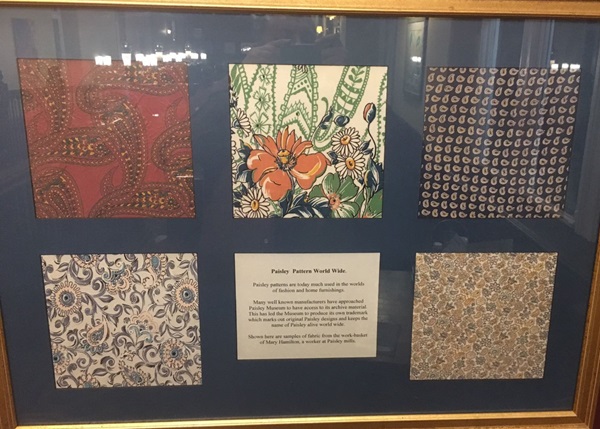
The text reads: Paisley patterns are today much used in the worlds of fashion and home furnishings.
Many well-known manufacturers have approached Paisley Museum to have access to its archive material. This has led the museum to produce its own trademark which marks out original Paisley designs and keeps the name of Paisley alive worldwide.
Shown here are samples of fabric from the work basket of Mary Hamilton, a worker at Paisley mills.
An illustration and text about Robertson’s jam factory.
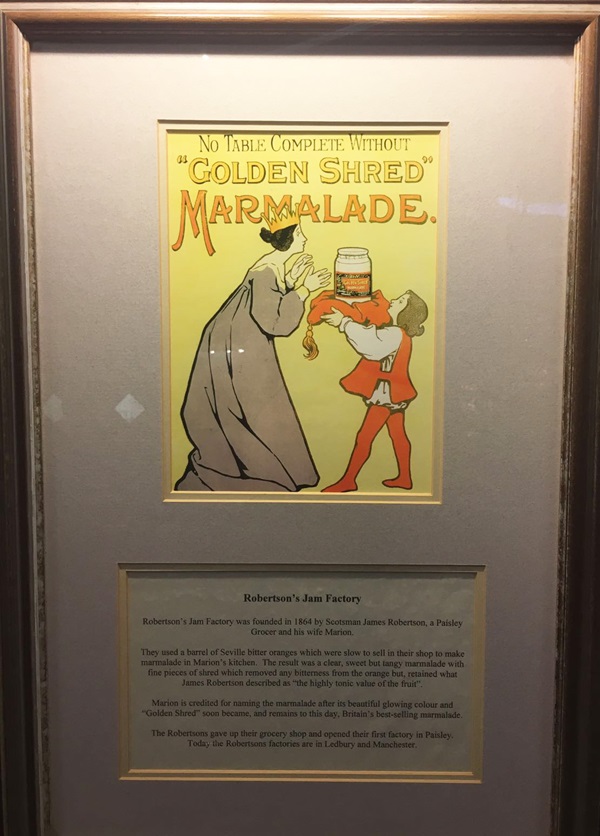
The text reads: Robertson’s jam factory was founded in 1864 by Scotsman James Robertson, a Paisley grocer and his wife Marion.
They used a barrel of Seville bitter oranges which were slow to sell in their shop to make marmalade in Marion’s kitchen. The result was a clear, sweet but tangy marmalade with fine pieces of shred which removed any bitterness from the orange, but retained what James Robertson described as “the highly tonic value of the fruit”.
Marion is credited for naming the marmalade after its beautiful glowing colour and Golden Shred soon became, and remains to this day, Britain’s best-selling marmalade.
The Robertson family gave up their grocery shop and opened their first factory in Paisley. Today the Robertson’s factories are in Ledbury and Manchester.
An illustration and text about Paisley Abbey.
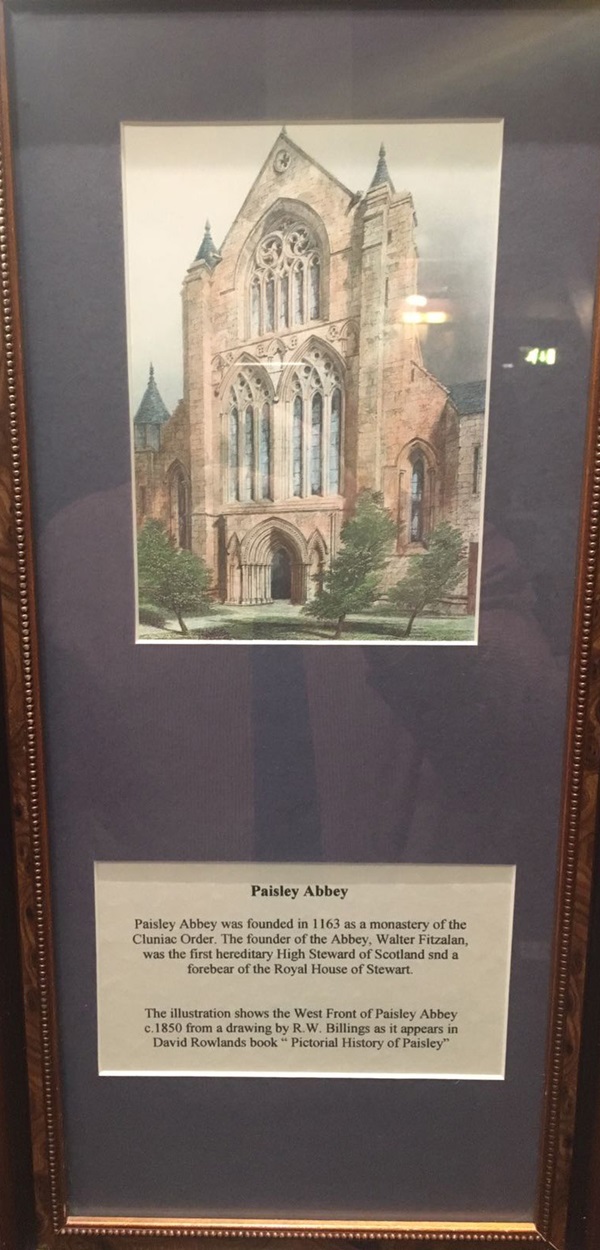
The text reads: Paisley Abbey was founded in 1163 as a monastery of the Cluniac Order. The founder of the abbey, Walter Fitzalan, was the first hereditary High Steward of Scotland and a forbear of the Royal House of Stewart.
The illustration shows the West Front of Paisley Abbey c1850 from a drawing by RW Billings as it appears in David Rowlands book Pictorial History of Paisley.
An old poster promoting playing golf in Scotland.
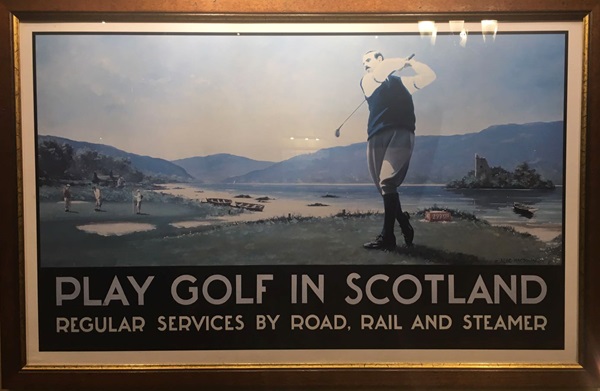
External photograph of the building – main entrance.
.jpg?h=400&&w=600&la=en&hash=A205E939C009E4A61F83619922C9F4639E9E1682)
If you have information on the history of this pub, then we’d like you to share it with us. Please e-mail all information to: pubhistories@jdwetherspoon.co.uk